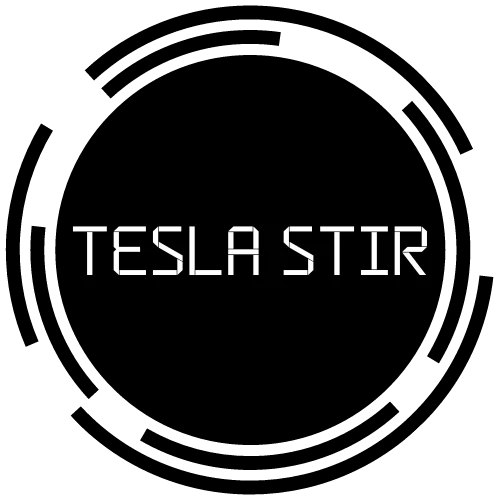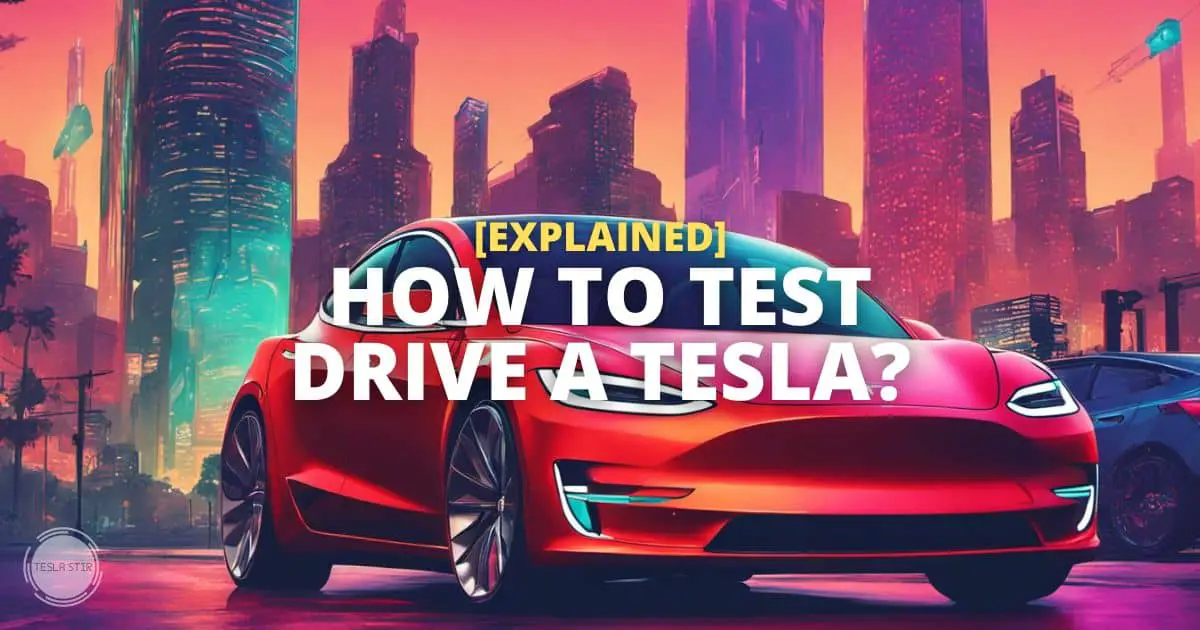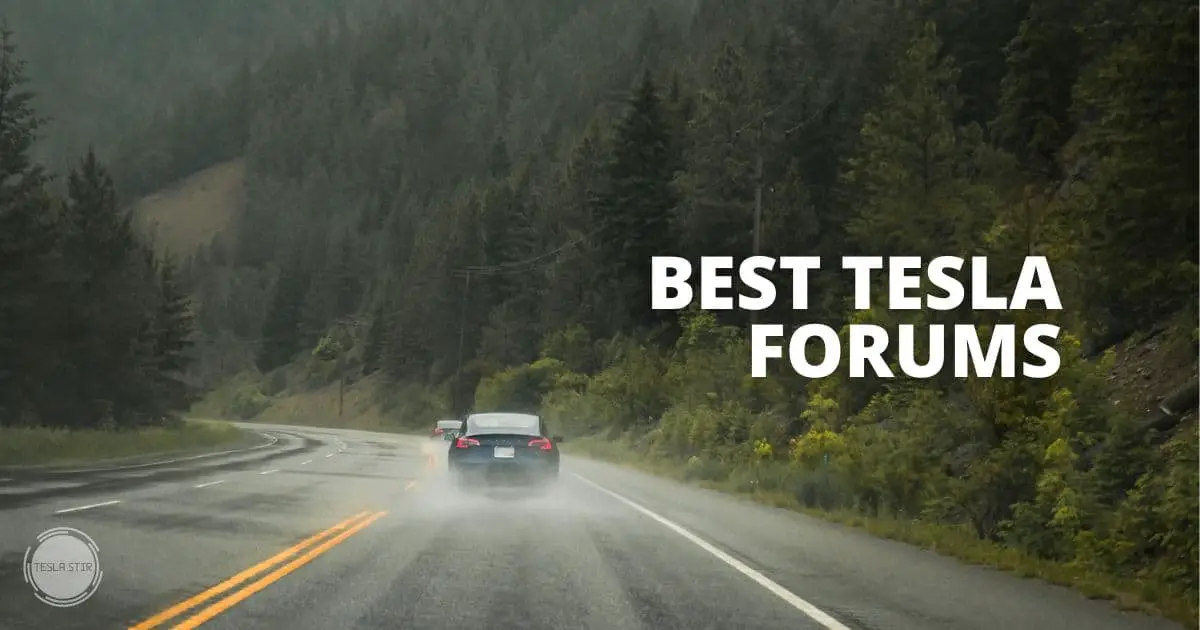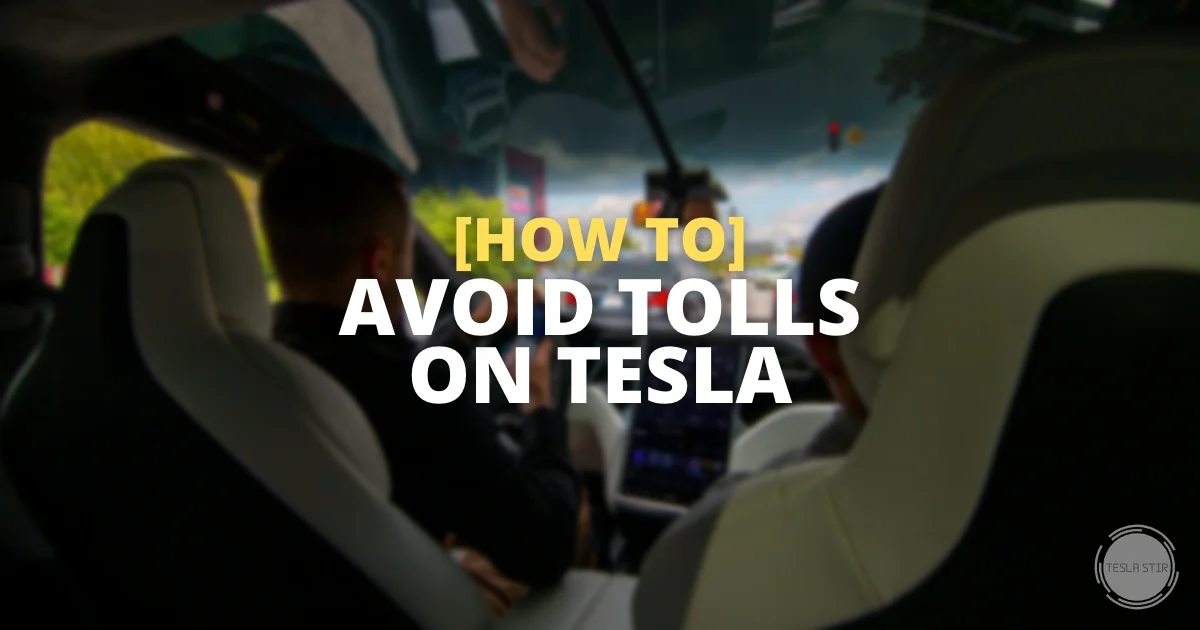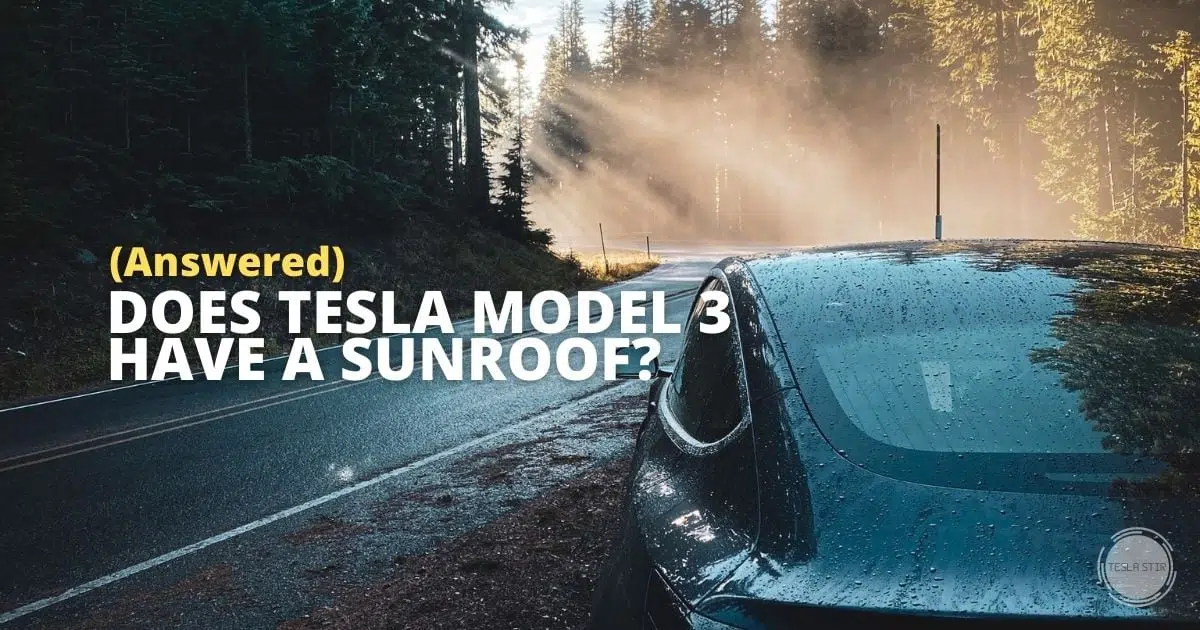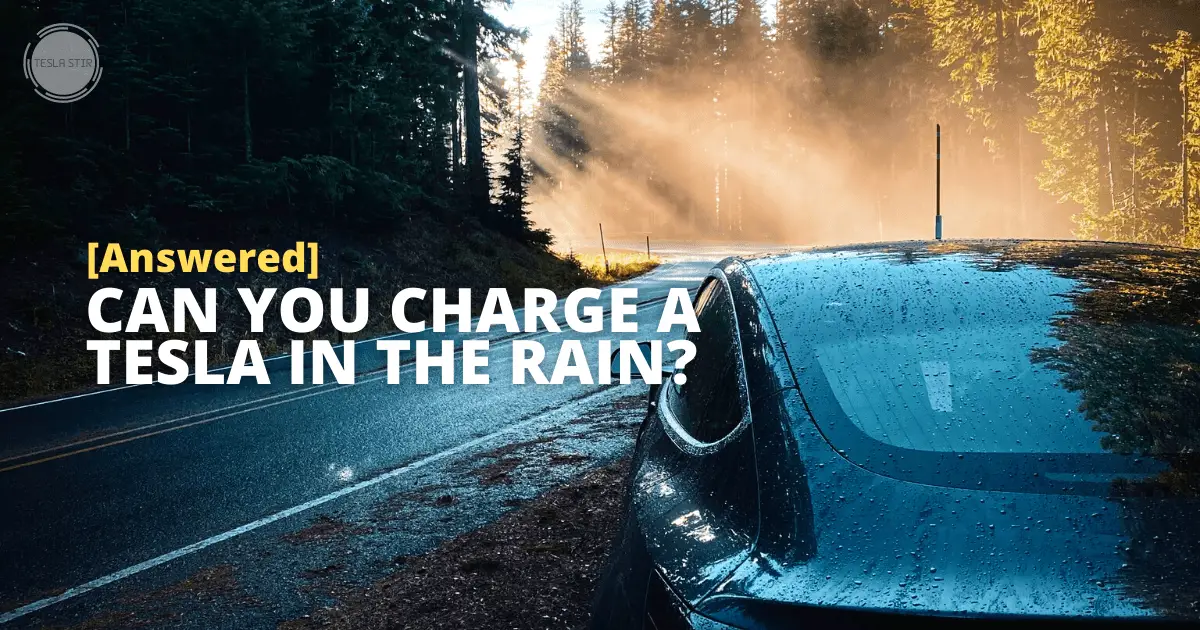Are Tesla Seats Real Leather? Here’s the Truth!
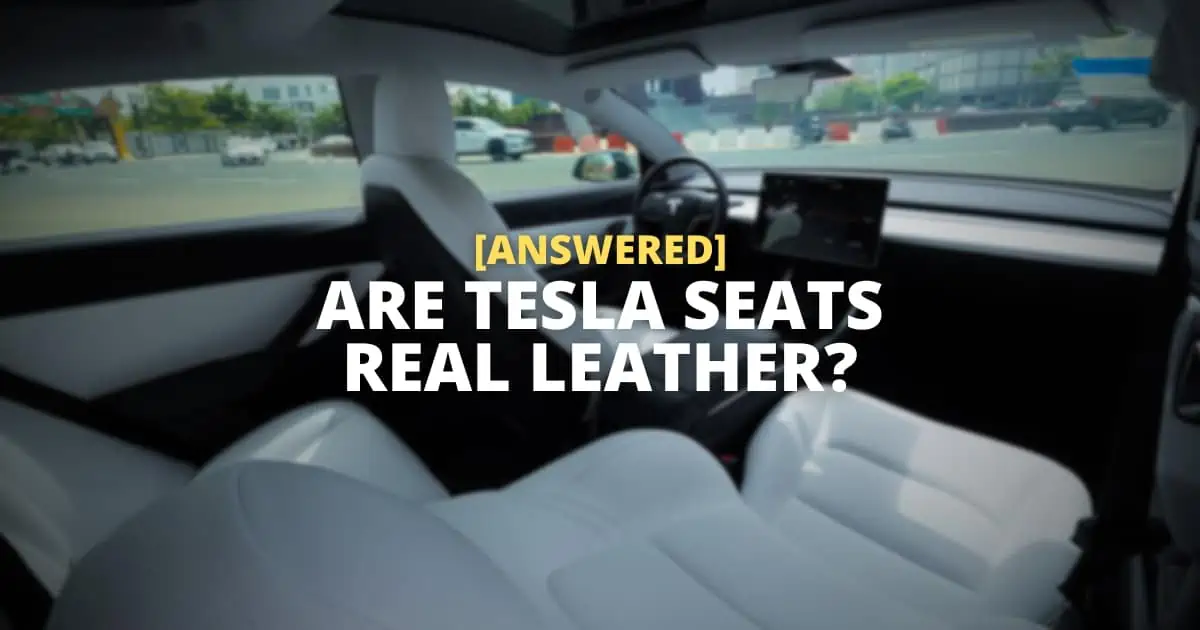
Let's uncover whether Tesla interiors are outfitted with real or fake leather seats.
Are you considering buying a Tesla EV? Or have you already bought one (congratulations!) and are curious about the sustainability and eco-friendliness of the premium leather interior? You're not alone.
After all, the luxurious design begs the question: Are Tesla Seats Real Leather?
The short answer is: No, Tesla car seats are not made of real leather. Instead, they use a new material that's cruelty-free and vegan but still feels sleek and luxurious, just like animal leather. It's made from natural and synthetic fibres and is 30% lighter than animal hide.
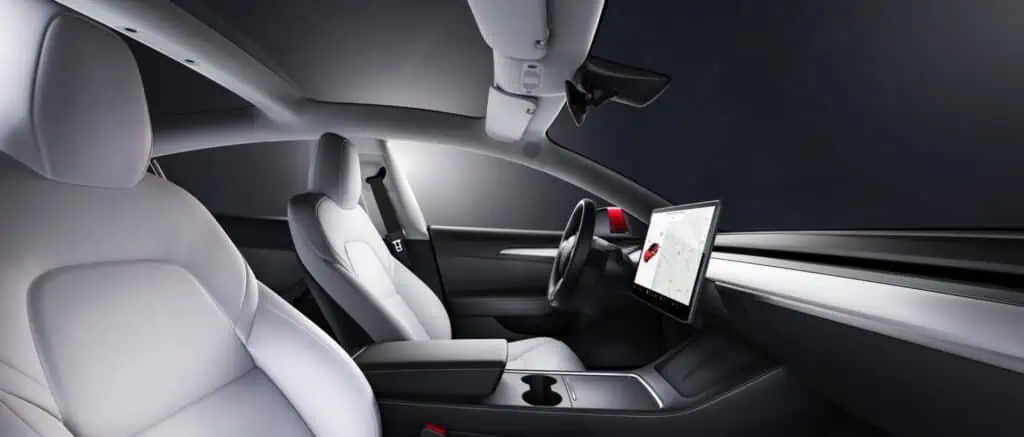
In this blog post, I'll discuss what material is used in Tesla cars, how it compares with animal leather regarding sustainability and longevity, and the environmental implications. We'll also debunk some common misconceptions about Tesla's use of faux leather vs animal leather products.
Whether you're curious or seeking peace of mind, keep reading to learn more about Tesla's seat material choices and how they impact comfort and the environment.
Key Takeaways
- Tesla seats are not real leather; they are made from vegan leather, a synthetic material.
- Using vegan leather in Teslas supports their commitment to sustainability and animal welfare.
- Tesla's faux leather seats offer a high-quality, durable, and luxurious alternative to traditional leather.
Are Tesla Seats Real Leather?
No, Tesla seats are not made from animal leather. Instead, they utilise a more eco-friendly material free of animal products – vegan faux leather – a synthetic material that closely resembles the look and feel of genuine leather. It is now the standard configuration for the current Tesla lineup, including Model S, Model 3, Model X, and Model Y.
Although fake, this ethical animal-free leather version still offers a similar feel and appearance. Tesla has taken this approach to create a more sustainable and ethical car interior partly in response to pressure from animal welfare groups like PETA (source).
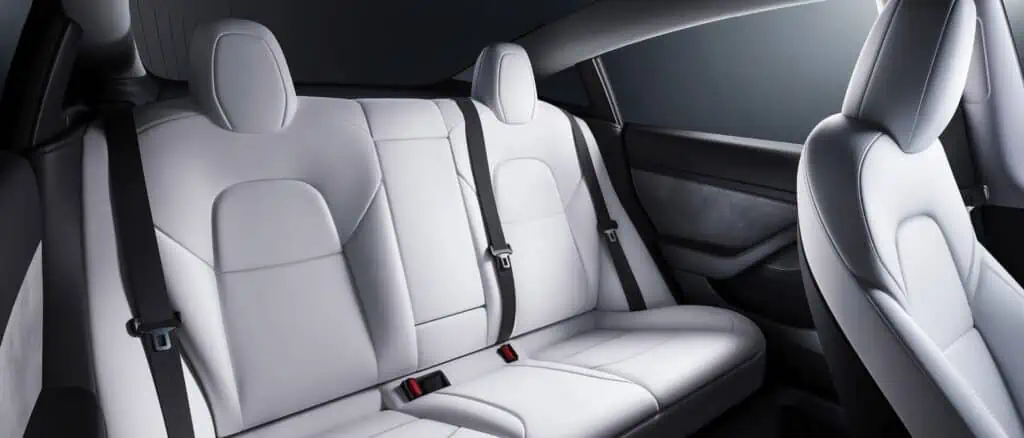
What is Tesla Vegan Leather Made Of?
Vegan or faux leather seats are made from Polyvinyl Chloride (PVC) and Polyurethane (PU). These synthetic materials offer the appearance and feel of animal-based leather without harming animals and the environment.
In recent years, there have been innovations in creating natural vegan leathers from sustainable and eco-friendly sources. These materials include algae, fruit peels, bark, pineapple leaves, and mushrooms. These options have the added benefit of being biodegradable, in contrast to traditional synthetic leathers.
Why Teslas Don’t Have Real Leather Seats?
Teslas don't have real leather seats because of a combination of factors, including an increased focus on sustainability, vegan customer preferences to have cruelty-free alternatives and lobbying by groups like PETA.
Real leather is difficult to source ethically and sustainably due to the environmental impact of tanneries and methods used to extract the hide. It also requires significant resources to maintain its quality over time, leading to high energy consumption and pollution levels.
Moreover, the artificial leatherette used in Tesla's interior is known for being easy to clean, smell and stain-resistant, and more durable than actual leather.
With Tesla's synthetic leather premium interior, you can enjoy a luxurious and comfortable driving experience while supporting ethical and sustainable practices.
If you're looking for the long answer, let's travel back in time and explore why and how Tesla decided to forgo leather seats in favour of leather-free material.
During its initial phase, Tesla vehicles were equipped with authentic leather for the seats and steering wheel in the premium trim. It was the standard and sole configuration available for purchase.
At the 2015 Tesla shareholders meeting, PETA (one of the stockholders) expressed its concern about using animal-based leather and urged the car manufacturer to switch to synthetic alternatives.
The Tesla shareholders voted against PETA's proposal at the time. However, the company decided to make a switch anyhow. It was a silent switch because Tesla didn't make any announcements at first.
The switch became noticeable in a few Model X cars in 2017, after which Tesla offered a vegan interior option on request during customer orders for Model S and X from July 2017. You could choose between the vegan option and the “premium” leather interior. At this point, the steering wheel was still wrapped in animal leather (unless you made a special request).
By 2019, Tesla EVs switched to faux leather, starting with the new Model 3 launch under the popular term vegan leather, making all the premium interior options leather-free with only a vegan version by default. However, the cars continued to have leather-wrapped steering wheels.
As of today, all newly manufactured Tesla cars feature vegan synthetic seats as the default option that includes the vegan steering wheel.
How Does Tesla Vegan Leather Compare to Genuine Leather?
Tesla's transition from genuine leather to non-animal leather in their vehicles aligns with their eco-friendly approach, as synthetic leather is more environmentally sustainable than genuine leather. It's also more animal-friendly and an excellent alternative for vegan customers.
However, the benefits go beyond animal welfare. Here are a few benefits Tesla vegan leather upholstery has over real leather.
- Eco-friendly and comfortable: The synthetic leather in Tesla cars is eco-friendly and highly comfortable. Many Tesla owners prefer the feel of artificial leather, as it is softer and easier to clean than genuine leather.
- Robust and durable: The durability and strength of Tesla's faux leather are comparable, if not superior, to real leather. Faux leather is often more resilient and can withstand daily wear and tear better. It is less susceptible to splitting, fading, cracking and peeling, making it a great long-term value.
- Stain resistant: Tesla's faux leather makes cleaning the interior easier as they're more resistant to stains than animal leather. You can remove most stains using soapy water or a mild detergent with a damp cloth.
- Pliable: Tesla's vegan leather is also more elastic and flexible, making it easier to maintain.
- Luxurious feel: Tesla's synthetic leather also feels great to the touch and has a luxurious appearance.
Is Vegan Leather Interior Eco-Friendly?
Vegan leather is often considered a more eco-friendly alternative to traditional leather. As it replaces animal products in manufacturing, you can positively impact the environment. Using vegan leather reduces greenhouse gas emissions typically associated with cattle farming and deforestation.
However, not all vegan leather is created equal. Some types of synthetic leather are made from petroleum-based materials like PVC, which can have a negative environmental impact due to their production process. Choosing sustainable vegan leather options, such as those made from plant-based materials, can be a more responsible choice.
In addition, by using vegan leather, you support a decrease in waste generated by the leather industry. Traditional leather tanning processes can create toxic waste and pollution, whereas some vegan leather alternatives have significantly lower waste and pollution levels.
To sum up, opting for sustainable vegan leather materials, like those used in Tesla's seats, can be a more environmentally responsible choice. Remember to consider the materials and production methods behind the vegan leather you choose to ensure that it aligns with your eco-friendly goals.
What Do Vegan Leather Seats Feel Like?
Vegan leather seats have a comfortable and premium feel. They aim to mimic the look and texture of genuine leather. Although made from synthetic materials, such as polyurethane, PVC, and natural fibres, they have a soft and smooth touch and offer durability and ease of maintenance. This TMC user shared his experience that the vegan seats seem to age better than traditional leather seats on his real leather Tesla.
In terms of appearance, Tesla's vegan leather seats are difficult to distinguish from their genuine leather counterparts. They provide a luxurious and elegant look, matching the design aesthetics of Tesla cars.
Maintaining and Cleaning Tesla's Faux Leather Seats
To keep your Tesla's synthetic leather seats in top condition, it's important to use the right cleaning products.
Avoid using harsh chemicals or solvents, as these may damage the material. Instead, opt for non-detergent soap, warm water, and a soft cloth or microfiber for cleaning your seats.
When cleaning your seats, be gentle and do not use excessive force. For tougher stains, use a cleaner specifically designed for synthetic materials, like Tesla's vegan leather seats. However, do not use leather cleaner on cloth seats.
It's crucial to address spills and stains immediately. The sooner you tackle them, the easier they are to remove. Be cautious when using lotions or other products that may leave residue on your seats and steering surfaces, as they might discolour or mar the synthetic leather.
Pets can also cause damage to your seats, so protect them with pet-friendly seat covers or a mat to shield the seats. Periodically checking headrests, seat seams, and edges for signs of wear or dirt accumulation can help you maintain their appearance.
By following these simple steps and using suitable cleaning products, you can ensure that your Tesla's synthetic leather seats stay pristine for years.
Can I Replace My Tesla Seats With Real Leather?
Tesla seats are now made from fully vegan materials, starting from their 2017 transition which applied to all vehicles from around 2019.
If you don't like the look and feel of the Tesla vegan leather, you can replace your Tesla seats with real leather using after-market seat covers.
When choosing real leather as a replacement, be aware of the ethical considerations and the environmental impact of using genuine leather. Nevertheless, if you opt for this change, select a reputable manufacturer to ensure the quality of the work and the materials used.
If you're still keen and prefer real leather, here are a few options:
- Buy seat covers: you can buy seat covers made from leather.
- Used cars: Teslas manufactured before 2017 may still have genuine leather seats.
- Custom: Another choice is to get a custom upholstery job for your Tesla. Professional upholsterers can replace the existing vegan leather with real leather, tailored to your preferences.
Vegan Options in Other Automakers
Besides Tesla, several other automakers have adopted vegan and eco-friendly seating materials. For instance, BMW and Mercedes have introduced alternatives like polyvinyl chloride (PVC), polyurethane (PU), and microfiber in their car interiors.
Car manufacturers are exploring innovative materials, such as textiles made from ocean plastic, lorica, vegetan, cork, recycled rubber, or ligneah. Bentley, for example, unveiled a concept car using eco-friendly options like Nordico, a material made from recycled wine corks. BMW's version is called Deserttex and is made from Cactus leaves. Other automakers that have forayed into vegan leather manufacturing include Audi, Land Rover and Volvo.
The demand for animal-free interiors is particularly evident among electric vehicle manufacturers. As you consider an electric vehicle with ethical and eco-conscious features, keep an eye on these automakers incorporating vegan options in their designs. Their commitment to reducing environmental impacts and promoting animal welfare is a testament to the growing importance of sustainability in the automotive industry.
Conclusion
As a Tesla owner, you can now enjoy a comfortable ride with a clear conscience, knowing that your car's interior is sustainable and cruelty-free.
Many owners have reported that the fake leather in their Teslas is more durable and resistant to creasing than natural leather.
Although some may miss the feel of genuine leather, it's important to remember that Tesla's focus on using vegan-friendly materials aligns with its aim to create an environmentally sustainable future.
The use of vegan leather not only provides a cruelty-free option but contributes to a more sustainable and eco-conscious choice for your vehicle's interior.
Embracing this change can contribute to a more responsible approach to auto manufacturing and a better world for future generations.
Which side are you on?
Frequently Asked Questions
Are Tesla Seats Made of Animal Leather?
It depends on the model year and upholstery option of the Tesla car. Earlier models of Tesla, such as the Model S and Model X, came with a premium (animal) leather interior as standard. However, Tesla announced that it is moving away from leather interiors in newer models and offering a leather-free option.
Is Tesla's Vegan Leather Really Animal-Free?
Yes, Tesla’s vegan leather is animal-free. It is made from synthetic materials, meaning no animals were harmed in production.
Does Tesla use fake leather?
Yes, Tesla uses faux leather, also known as vegan or synthetic leather in its current lineup of cars. They started making the switch in 2017 when it was an option, and by 2019, they completely turned to animal-free interiors.
What is the composition of Tesla's vegan leather?
Tesla’s vegan leather is made from polyurethane and other plastic, synthetic fibres that replicate the look and feel of leather. This material is known as “vegan leather” or “faux leather”.
Do Tesla Model Y seats contain leather?
No, the Tesla Model Y seats do not contain leather. Tesla stopped using genuine leather in their vehicles, opting for vegan leather for its entire current range.
What material is used for Tesla Model 3 seats?
Tesla Model 3 seats are also made from vegan leather, providing a comfortable, durable, and environmentally friendly seating option.
How durable is Tesla's vegan leather?
Tesla's vegan leather is designed to be highly durable, and resistant to wear and tear. However, the actual durability may depend on usage and proper care.
What is the proper method for cleaning Tesla seats?
To clean Tesla seats, you should use a soft cloth, mild soap, and water. Gently wipe the seats to remove dirt or stains, then dry them with a clean, soft cloth.
Can leather cleaner be used on Tesla vegan leather seats?
No. It's best to avoid using a traditional leather cleaner on Tesla's vegan leather seats, as it may cause damage to the synthetic materials. Stick to mild soap and water for cleaning.
Do vegan leather seats hold up well with dogs?
Vegan leather seats are designed to be durable, but the longevity may vary depending on your dog's size, breed, and behaviour. To protect your seats, consider using a seat cover or pet-friendly accessories.
Can I Get Leather Interiors as an Option on my new Tesla order?
No, the new Teslas only come with vegan leather seats, a leather-free option. However, earlier models like the Model S and Model X may still have leather interiors. If you're keen, you can even opt for third-party vendors who offer aftermarket leather interiors for Teslas.
What are the Advantages of Leather-Free Interiors?
Leather-free interiors have several advantages over traditional leather interiors. They are more eco-friendly, easier to clean and maintain, and less likely to crack or fade. Additionally, they are more resistant to damage from sunscreens, hair sprays, and sanitisers.
Is Tesla's Synthetic Leather Suitable for Long-Term Use?
Yes, synthetic leather is suitable for long-term use. It is durable, easy to clean, and resists fading and cracking. However, it is essential to follow the manufacturer’s care instructions to ensure that it remains in good condition.
When did Tesla remove real leather from its vehicle interiors?
By 2019, the last animal products were removed from Tesla cars, making them fully vegan-friendly.
